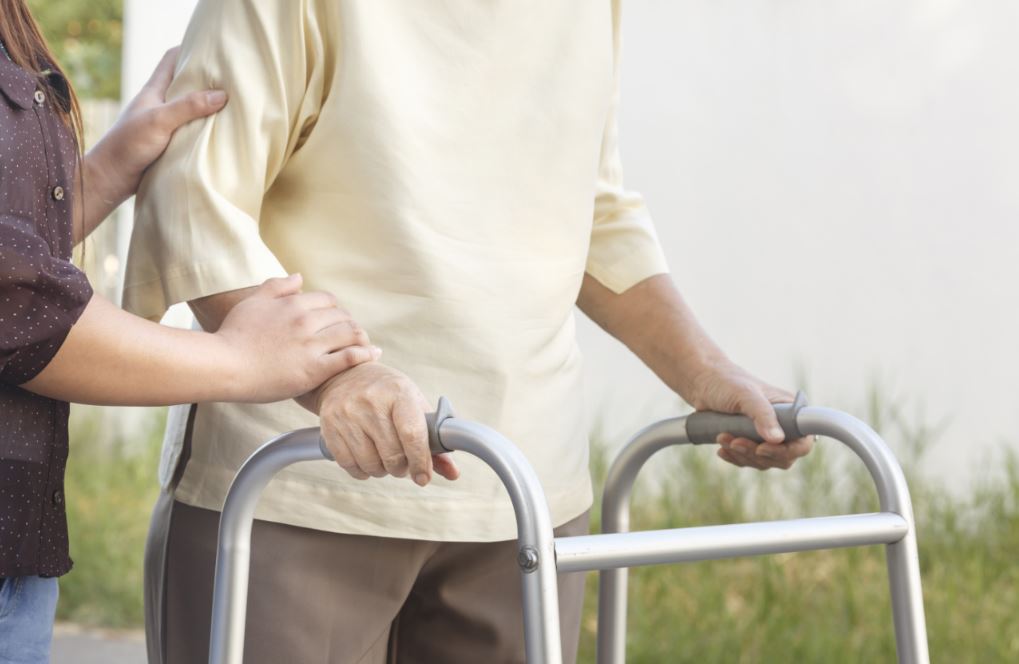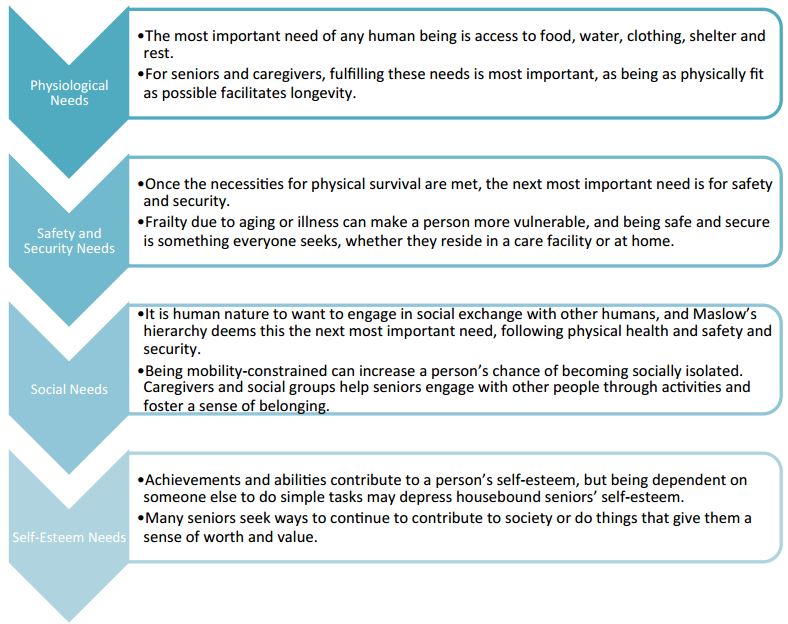Aging brings with it many changes, often including disability due to frailty or illness. While some seniors are able to care for themselves at home, others experience conditions that constrain their mobility or leave them housebound. In the US and the UK, the most common disability among seniors is constrained mobility.
Despite the prevalence of disability, there is an increasing preference among seniors across the globe to “age in place” by remaining in their homes through the later stages of life instead of moving to institutions, even if they need healthcare or assistance with everyday tasks.
Tech’s Value to Mobility-Constrained Seniors
We live in an age when most of us are almost always digitally connected— either to other people or to some form of media, such as online video content or mobile apps. Although seniors are typically less likely than other age groups to use new technology, the connections it can provide are even more important for them than they are for younger people, as their mobility problems may prevent them from living an active life and interacting often with others face to face. Many new forms of technology can keep housebound seniors in touch: for example, smartphones and tablets allow instant connectivity between people who wish to communicate with each other, putting loved ones and friends just a phone call (or email or chat message) away.
In senior care, technology has found numerous applications that not only enable seniors to get faster and more immediate assistance when needed, but also help them lead a better quality of life. As we showed in our previous reports in the Silvers Series, wearable devices can help seniors monitor their own health and help caregivers track the well-being of those in their care. These devices also fulfill safety and security functions, helping caregivers and others track the whereabouts and activities of the wearer.

Source: Shutterstock
We consider the conditions that may lead to seniors becoming housebound or mobility constrained and the kind of physical and emotional needs that mobility-constrained people have.
Understanding the Prevalence of Mobility-Constrained Seniors
A person’s mobility may be constrained by a disability brought about by an infectious disease, a chronic condition, an injury or frailty that accompanies the natural aging process.
The WHO’s 2011 World Report on Disability cited a key figure from the organization’s last World Health Survey, which was completed in 2004: 15.6% of the world’s population that year had a moderate to severe disability. That equates to about 650 million people, given that the global adult population was approximately 4.2 billion in 2004. About 248 million people aged 60 and over had a disability in that year, we estimate from the survey, equivalent to 38.1% of all disabled adults. The survey found that disability prevalence among seniors in lower-income countries was much higher than in higher-income countries (43.4% versus 29.5%).
In Focus: The US and the UK
In the US in 2014, about 36% of those aged 65 and over reported experiencing some kind of disability. The most common type of disability was mobility or ambulatory difficulty, experienced by 23.0% of seniors.

Source: Shutterstock
The second-most-common type of disability was independent living difficulty, experienced by 15.2% of the group. This refers to difficulty with running errands, such as shopping or going to the doctor, alone. Some respondents to the survey reported experiencing more than one disability.
In the UK, meanwhile, more than one-quarter of silvers have reported chronic health problems related to their muscles, bones, heart or circulation:
- 27.3% of people aged 65–74 and 33.3% of those aged 75 and over reported experiencing long-term conditions that affect the musculoskeletal system in 2007 which can significantly affect one’s mobility.
- Conditions affecting the heart and circulatory system were reported by 27.7% of those in the 65–74 age group and by 30.1% of those 75 and over.
While some people with disabilities may be able to carry out certain activities of daily living on their own, they may need assistance from caregivers or to modify their homes to make them more accessible.
The Needs of Seniors Who Are Aging in Place
In-home care is becoming more prevalent among those who have long-term health conditions. As we noted earlier, seniors are showing an increasing preference to age in place—to remain in their own homes and receive care there, instead of moving to a residential institution.
As more seniors age in place, many will be living independently. They may not always have access to assistance when they experience difficulties while running errands, completing regular household chores, or being as socially active as they once were. Several studies have indicated that being isolated in later age can have a detrimental effect on a person’s mental and physical well-being, and increase the risk of developing further health conditions.
With people’s needs varying according to their life stage and circumstances, healthcare organizations, social groups and innovators have created products, services and activities that can serve the unique needs of mobility-constrained people, and so facilitate their inclusion in society.
Using psychologist Abraham Maslow’s hierarchy of needs theory as a base, we group the needs of mobility-constrained seniors into four themes, on a scale that runs from basic survival to emotional satisfaction: physiological needs, safety and security needs, social needs and self-esteem needs.

Hierarchy of Needs for Seniors. Source: Fung Global Retail & Technology
For new concepts, innovations and activities to become popular and successful, they must fulfill these needs of elderly people, helping them lead not only longer lives, but also better-quality lives. In our next blog, we will consider how new developments are helping silvers lead better lives by fulfilling these various needs.
For more details on The Silvers Series read our full report here or check out the first, second, third, or fourth blog posts in the series.
Connect with us on social media:
@DebWeinswig
@FungRetailTech
Facebook
LinkedIn
Subscribe to our YouTube channel
Pinterest
Instagram
